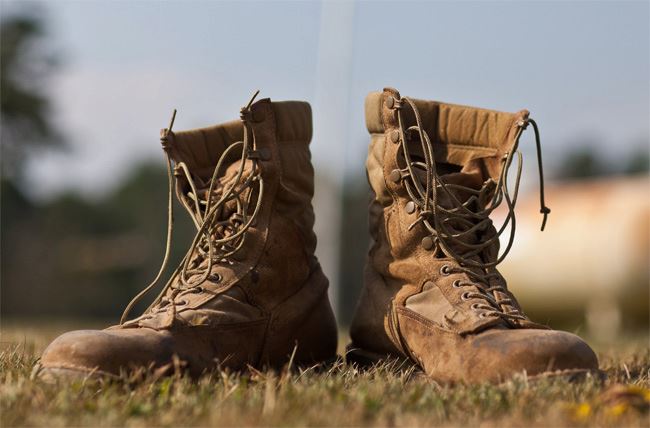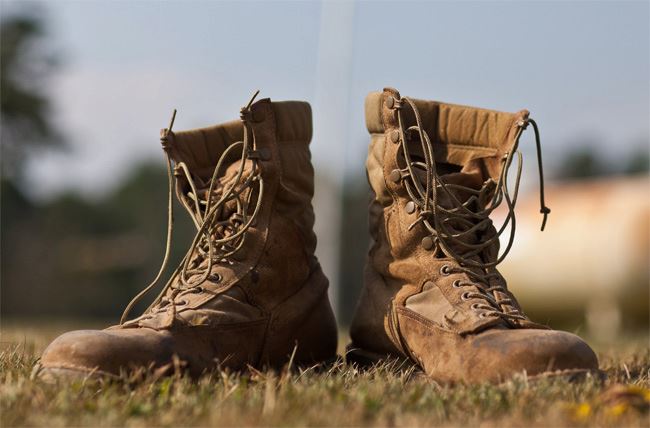Do veterans need safe spaces? This one doesn’t think so.
{$excerpt:n}


via Facebook
Higher education institutions around the country are providing Green Zone training to faculty and staff interested in gaining a further understanding of veteran-related issues and challenges. While this is admirable, questions remain as to whether the programs actually produce a positive result for the veteran community.
The Green Zone concept was developed by Virginia Commonwealth University’s (VCU) Associate Vice President for Research Ann Nichols-Casebolt. In her article published in 2012, Nichols-Casebolt discussed how the Green Zone program was modeled after the “Safe Zone” program designed to create “safe spaces” on university campuses for members of the LGBT community. While the initial program may have served its purpose for the LGBT community, the program does not fit the culture nor serve the needs of the veteran community. After returning home from war, the last place veterans feel unsafe is a university campus.
While Green Zone training comes from administrators’ good intentions in trying to adapt to the uptick of student veterans enrolling in higher education institutions, it fails to produce reliable and consistent results for the veteran community. There are many problems associated with green zone training that must be addressed in order to provide better training and also to improve the services for student veterans on campus.
Many universities are adopting traditional “Safe Programs” to help create safe zones for student veterans. However, the very last emotion veterans worry about at their university is feeling safe. Student veterans are not your average millennial college student. Veterans are non-traditional students who have been placed in some of the world’s most dangerous conflicts. Veterans do not feel unsafe on university campuses. Many veterans feel the label and goal of green zone training are offensive and directly highlights the disconnect between university administrators and the veteran community.
One of the largest problems with Green Zone safe spaces for veterans is that it hinders open lines of communication. A student population has many different cultures and backgrounds. It is difficult for veterans or any other group to exchange and express ideas and opinions if they are separated in their own unique “safe place.” The reality is – which all veterans are aware – “safe places” do not exist in the real world.
Let’s be honest; the world presents several challenges, but university campuses pose no threat to the veteran community. Conducting online and inadequate training with no uniformity, standards, or oversight helps some staff and faculty label their area as a “safe place” but it’s unnecessary. By creating “safe places” for veterans, universities are creating a false sense of security in an artificial world that has no impact on the environment or culture of the institution.
Higher education officials and veterans must work together to create a comprehensive training program, with a universal standard, to address veteran-related issues. This comprehensive program must be developed and led by student veterans since they are the subject matter experts. Student veterans can work with university administrators to develop a curriculum that supports and provides more in-depth training and an actual understanding of the veteran community.
In order to properly serve veterans in higher education, universities should focus on three key strategies to enhance academic success. First, provide proper training (developed by student veterans) to staff and faculty to help facilitate a smooth transition for veterans. Second, create a military-friendly campus environment by working to integrate students veterans into campus activities and leadership roles. Finally, help the veteran community establish a Student Veterans of America (SVA) chapter on campus to create a coalition of student veterans looking to have a larger impact on campus. These vital strategies will help create a military-friendly learning environment, facilitate a smooth transition, and enhance academic success.
With more veterans leaving the military and entering the academic environment, higher education institutions must be prepared to provide high-quality programs and services that meet their unique needs. If universities continue to administer Green Zone training, the curriculum must change in part in order to better serve the veteran community.
Teaching and informing university faculty and staff about veteran-related issues is important and serves a purpose, but that purpose should not be to create a “safe place” for those who have been placed in harm’s way to protect us. Instead, everyone on campus should feel safe with veterans around and excited to help them integrate into campus life.
The post Do veterans need safe spaces? This one doesn’t think so. appeared first on Red Alert Politics.
Source: Red Alert Politics


